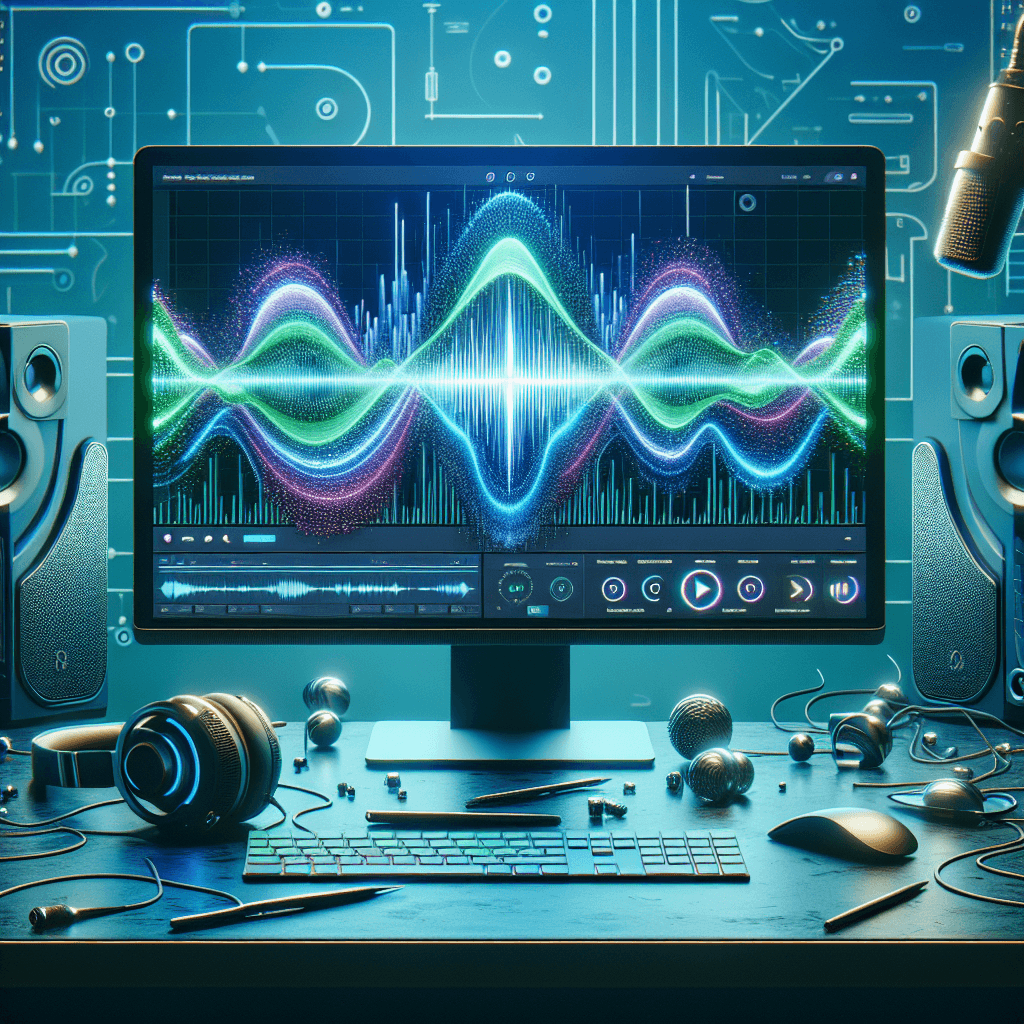Back to Blog
Ultimate Audio Visualiser Guide for Spotify Success
September 12, 2025
inMarketing

<h2>Introduction to the topic</h2>
<p>In today's digital age, music consumption has evolved dramatically, and platforms like Spotify have become the go-to destination for millions of listeners worldwide. As an artist or content creator, standing out in a saturated market can be challenging. One effective strategy to enhance your music presentation is through the use of an audio visualiser. This guide will delve into the essentials of audio visualisers, their benefits, best practices, and common challenges associated with them.</p><p><h2>Understanding the Basics</h2></p>
<h3>What is an Audio Visualiser?</h3>
<p>An audio visualiser is a tool that converts sound into visual representations, creating an engaging experience for listeners. These dynamic visuals often react to the music's beat, melody, and frequency, providing an immersive experience that can enhance the overall listening experience. </p><p><h3>Types of Audio Visualisers</h3></p>
<p>1. <strong>Real-time Visualisers</strong>: These generate visuals based on live audio input, ideal for live performances.</p>
<p>2. <strong>Pre-rendered Visuals</strong>: These are created beforehand and are often used in music videos or promotional content.</p>
<p>3. <strong>Interactive Visualisers</strong>: These allow users to manipulate the visuals in real-time, providing a unique engagement opportunity.</p><p><h2>Key Benefits and Features</h2></p>
<h3>Enhance Listener Engagement</h3>
<p>Using an audio visualiser can significantly improve listener engagement. Research shows that people are more likely to remember and share music that is paired with captivating visuals. This can lead to increased streams and shares on platforms like Spotify.</p><p><h3>Branding Opportunities</h3></p>
<p>An audio visualiser can serve as an extension of your brand. By incorporating your logo, colors, or unique style into the visuals, you can create a cohesive brand identity. This consistency can help listeners recognize and remember your music more easily.</p><p><h3>Versatility Across Platforms</h3></p>
<p>Audio visualisers can be used across various platforms, making them an excellent addition for artists who want to promote their music not just on Spotify but on social media platforms like Instagram, YouTube, and TikTok. This versatility allows you to reach a wider audience and maximize your promotional efforts.</p><p><h3>Accessibility and Affordability</h3></p>
<p>Many free music visualiser tools are available, making it easier for independent artists to create content without a significant financial investment. This democratization of technology means that even emerging artists can produce high-quality visuals.</p><p><h2>Best Practices and Tips</h2></p>
<h3>Choose the Right Tool</h3>
<p>When selecting a free audio visualiser, consider the following:</p>
<p>- <strong>Ease of Use</strong>: Look for user-friendly interfaces that require minimal technical skills.</p>
<p>- <strong>Customization Options</strong>: Ensure that the tool allows you to modify visuals to align with your brand.</p>
<p>- <strong>Output Quality</strong>: Check if the visualiser supports high-resolution outputs suitable for platforms like Spotify.</p><p>Some popular free music visualiser tools include:</p>
<p>- <strong>Renderforest</strong>: Offers a range of templates and customization options.</p>
<p>- <strong>MusicVid</strong>: A straightforward tool perfect for beginners.</p>
<p>- <strong>ButterReader</strong>: An excellent resource for discovering more about audio visualisers and their applications in music promotion. </p><p><h3>Sync Visuals with Music</h3></p>
<p>To create a compelling audio visualiser, ensure that the visuals sync perfectly with the audio. This synchronization can enhance the emotional impact of the music and keep viewers engaged. Use tools that allow you to adjust the timing of visual elements to match the beats and crescendos of your song.</p><p><h3>Keep It Simple</h3></p>
<p>While it might be tempting to create intricate visuals, sometimes less is more. Simple designs can often have a more profound impact, allowing listeners to focus on the music. </p><p><h3>Test and Iterate</h3></p>
<p>Once you've created your visuals, gather feedback from friends, fans, or industry peers. Use their insights to refine your visuals and ensure they resonate with your audience. A/B testing different versions can also provide valuable data on what works best.</p><p><h2>Common Challenges and Solutions</h2></p>
<h3>Technical Difficulties</h3>
<p><strong>Challenge</strong>: Many artists face technical issues when using audio visualisers, from software glitches to compatibility issues.</p>
<p><strong>Solution</strong>: Ensure you have updated software and check system requirements before starting. Joining community forums or user groups can also provide support and troubleshooting tips.</p><p><h3>Standing Out in a Saturated Market</h3></p>
<p><strong>Challenge</strong>: With many artists using audio visualisers, how can you make yours stand out?</p>
<p><strong>Solution</strong>: Focus on your unique brand elements. Incorporate personal stories, visuals that reflect your music style, and innovative designs that differentiate you from others. </p><p><h3>Time Investment</h3></p>
<p><strong>Challenge</strong>: Creating high-quality visuals can be time-consuming.</p>
<p><strong>Solution</strong>: Develop a template or a set of designs that you can reuse for different tracks. This will streamline the process and save you time in the long run.</p><p><h2>Conclusion</h2></p>
<p>In summary, audio visualisers offer a powerful way to enhance your music on Spotify and beyond. By understanding the basics, leveraging key benefits, adhering to best practices, and overcoming common challenges, you can effectively use visual content to captivate your audience and promote your music. As you embark on your audio visualiser journey, remember to stay true to your brand and continuously explore new creative avenues. </p><p><h3>Next Steps</h3></p>
<p>- Start by researching various audio visualiser tools and select one that fits your needs.</p>
<p>- Experiment with creating visuals for one of your tracks, keeping your branding in mind.</p>
<p>- Gather feedback and iterate on your designs to improve engagement.</p><p>With dedication and creativity, your audio visualiser can become a valuable asset in your music promotion toolkit, leading to greater success on platforms like Spotify.</p>